#20 NABEELA AKHTAR & OMAIR BARKATULLA Cairo (Egypt) Photographers

Leica Liker is honored to have NABEELA AKHTAR & OMAIR BARKATULLA, Cairo (Egypt) Photographers as our #20 guests.
It’s hard to believe that you can achieve something when you’re expected to shoot the ‘picture perfect’ and capture the ‘decisive moment’ that’s illusive 99.9% of the time. So I decided to start this year’s first post by exploring raw experimentation. The idea of picking up the camera and playing with it. Letting the desire to learn and be a part of something, lead you to where ever it may. Trying out ideas in your head and seeing how it plays out in reality.
I came across Nabeela Akhtar’s and Omair Barkatulla’s photo collages, and saw that even in the center of the Egyptian revolution, learning and experimentation is alive and well. Media has dominated so much of our world opinion on life in the Middle East that it has distorted reality. So much so, that we forget that people still have to deal with the business of everyday living.
What drew me to Nabeela and Omair’s images are their playful experimentation with time, collage, humor or just movement . The same person or animal can be seen ‘walking or running’ through the frame. Or the hands can be in two different places at once. Like a mini documentary film captured within a single frame. They want us to see the magic of the entire experience and not just that fickle fraction of a ‘decisive moment’. They appropriately call their blog, A Cairo Minute. Implying that time is extrapolated. It’s different. Everything is seen filtered from their peculiar point of view. It’s clear they do not take everything so seriously and they have fun with photography and photoshop.
Their unabashed and sometimes wild photo collages recall a mixture of Eadweard Muybridge’s seminal stop-motion work on Animal and Human Locomotion and David Hockney’s amazing photo collages of places and people. Omair pointed out that Hockney’s images are portraits and not photos. They actually liken their work more to Martin Handford’s children’s classic, Where’s Waldo? (Where’s Wally? outside of USA and Canada) Leica Liker readers will also remember Jan Meissner’s beautiful fine art collages.
What I also love about Nabeela and Omair’s experiments is that they broaden our photographic horizon. Particularly in the world of documentary photography. We should try different techniques and different processes. These collages are meant to be seen up close and larger than life-size. I see it analogous to the human desire to look outside of our galaxy for new worlds when all we have to do is look within our single frame called Earth. Our oceans and the human body are a universe in themselves. And within the single frame of a photo, we can experience with all our faculties of what it’s like to ‘live’ in Cairo.
Here is my interview with NABEELA AKHTAR & OMAIR BARKATULLA:
THIS POST DOES NOT DO JUSTICE TO IMAGES. PLEASE CLICK ON COLLAGE PHOTOS TO VIEW IN LARGER FORMAT.
What is your relationship with each other?
O: Nabeela is my dear wife and gets me out on the streets to work when I’m feeling lazy.
N: Omair is my husband.
Nick Names: None
Currently living in: O: Maadi, a suburb in Cairo. We both come from England. Stopped in Egypt for a holiday and decided to stay for a while.
Motto: O: A photographer should be charming.
Street Photographer since:
O: School days.
N: Ever since moving to Cairo in 2010
How did you get started in photography?
O: I was studying graphic design. I took a photography course and was challenged to use it in creative ways. We shot with negative film and printed ourselves. We often used the images in our designs. Photography to me, is graphic design. You are essentially selecting and choosing and putting together elements. That ‘s how I got into it seriously. When Nabeela and I got married we both shared a passion for it. We found we could collaborate together. Sometimes we do one or the other project together. We like to bounce ideas off each other.
N: I guess it all started because my Dad was into photography. I could remember when I was 5, he would be filming video at every occasion. For him, it was a huge thing. He always had a Polaroid with him too. When I got older he let me be the one to use the video and Polaroid at all family events. From there, it was natural that I was drawn to street photography. When we moved to Cairo my interest in photography blossomed from interest in the amazing architecture. I moved to street photography because every where you go, life is happening. You can’t avoid it.
My interest in panoramic collages came after the Egyptian revolution, went to a part of Cairo to take pictures of graffiti. It was this really long wall. I slowly photographed along the wall. It wasn’t until I got back home and loaded the images into Photoshop, I realized the people and traffic were more interesting. So I went back to take the panorama. The second picture I took was of a mosque and 3 people on motorbike. It was quite fun. I realized it told a story of who was visiting the mosque and it captured a whole street life. It was from there the panorama developed by accident.
Profession/Job:
O: Graphic designer, lecturer of design at university
N: Personal Trainer
Websites:
O & N: http://acairominute.wordpress.com
N: www.hugyourbackpack.wordpress.com
Organizations or Group: None
What was the first camera both of you started with?
O: Point and shoot Fujifilm when digital cameras were the new thing. Then I was very interested in medium format so I bought a seagull, a twin lens reflex. It ended up being very expensive with the film. Then we bought a Nikon 3100d. It is inexpensive, not bulky and not intrusive. We are not the most lavish spenders of equipment and kit. We spent more on decent lenses. You shouldn’t put off that project because of not having the killer camera because it might not happen.
N: My Dad’s Polaroid.
Favorite Street Camera & Lens:
O: Nikon 3100d, 24mm (not pro, but light enough)
N: Nikon D3100d with 18-55mm kit lens. It’s basic but we’ve had some good times with it.
Back-up Street Camera & Lens:
O: None
N: 50mm lens is perfect for those close ups. A small but versatile digital Canon SD1100 is perfect for taking discreet pictures without attracting too much attention. I also use my Samsung Note 1 GT N7000 phone. With the increase in better camera quality on your phone, its now possible to take high quality pictures.
Favorite photography gadget: O & N: None
Favorite street food:
O: Pop corn
N: When I’m taking pictures I like to eat light and quick. In Cairo there’s plenty of street stalls selling small sandwiches consisting of fool beans and falafel stuffed in warm pita bread with fresh salad. I also drink plenty of water to stop myself from dehydrating, especially in the summer when temperatures reach as high as 39˚C.
Do you listen to music while shooting?
O: I listen to the sounds of the city.
N: No as I find it distracting. I love to hear the sound of the streets and use that to guide me towards my next picture
Favorite music when shooting and/or editing Photos:
O: Anything mellow: Donovan, Paul Simon.
N: I’m not fixed on one genre. I like to listen to a wide variety from 50’s rock and roll to classical music
Favorite photo software:
O: Photoshop and Lightroom
N: Adobe Photoshop CS5.1
What software do you use to stitch the multiple shots into a panoramic collage?
O & N: Adobe Photoshop CS5.1
Is there a lot of post processing done to the stitched images?
O: Yes, cutting out people, colour correction, sharpening, burning.
N: On my street photography no, but with the new collage project, A Cairo Minute, it takes more work. It’s like creating a whole new picture starting with a blank canvas. We need to spend longer time selecting the right pictures and then stitching the multiple shots together to create the unpredictable results you see.
3 Favorite Master Photographers:
O: Steve McCurry, Sebastiao Salgado, James Natchwey
N: Steve McCurry, James Natchwey, my husband
3 Favorite Contemporary Photographers:
O: Andreas Gursky, Martin Schoeller, Joel Sternfeld
N: Andreas Gursky, Vivian Maier, Flickr groups
Which 3 photographers’ prints do you own?
O & N: None at the moment.
Color or Black and White?
N: Mainly colour, but black and white does have a classic feel to it that makes certain pictures stand out.
Shoot Film or Digital ?
O: Digital because we need quantity. The display screen has changed everything.
N: I was given a Zorki-4k film camera that I’ve not had the chance to use yet. I’ve experimented before with Omair’s Seagull film camera and love the detailing of the pictures. But right now I would always go for digital as we live in a time of constant movement and haste and the need to take pictures and develop them quickly is greater.
If Film, what type of negative? Kodak
Is there a special time of the day you like to shoot or is any time good?
O: Late afternoon when Cairo starts to get social. The light is a rich golden colour.
N: In Egypt the sun is too strong during the day so I tend to shoot early morning or mid afternoon. I love the lighting produced by the morning rays and by the late afternoon sun.
How do you define photographing the streets?
O: I’d say the photo should capture something of the reality of where you are. I don’t mean you shouldn’t construct the photo somehow. I feel if the place that you choose does not translate the mood then it’s because they’re just pictures. You have to wait for the event that happens that exemplifies the nature or mood of the place. Or like we do, we unashamedly construct a whole picture from pictures in our collages. It’s not pointing and clicking and being honest. But honesty is relative and debatable.
We might stay somewhere for 15 minutes. A mother pushes a stroller and a child follows and drops something and picks it up. Or a car accident happens. On any given day things could be interesting or dull. It’s all about waiting for the thing to happen.
I studied anthropology and talked about how to represent a culture to other people through photos and film. You are already making editorial decision of where to point. Like film you might add music to enhance or bring out the mood. It’s the same when we wait to capture something. Sometimes I include myself in the shots on our collages for character. And of course where we choose to set up photos is already the first editorial decision.
N: It’s observation of the subject first- that’s the main thing – and getting into position. For our panoramic collages, I often find the position and wait for 20 minutes. I don’t believe in shooting a bunch of pictures and hope that one turns out. Of course I do rely on a little luck.
Why did you choose shooting the streets and not another form of photography or stamp collecting?
O: Collecting people, places and environments is something you can’t really buy. We own the experience, and the fact that we came and saw and captured it. You can’t really sell that on, or collect that from others.
N: Actually when I was a teenager I was an avid stamp collector, with my favourite collection hailing from Russia. I appreciated the design, typography and texture of the stamps.
I did my degree in Psychology and so have always been interested in human emotions and the way our environment affects us. Since moving to Cairo I became interested in Street photography. It was a real challenge trying to take pictures, as people here tend to be more suspicious of anyone with a SLR. But I found that with street photography it’s about getting out there, assimilating yourself and overcoming your fears. You’re not going to get it right every time but it’s the excitement that keeps you going.
What motivates you to photograph the streets?
O: The knowledge that they won’t always be the way they are. It’s the notion of real life and being a window for others into real life (even if we are warping it).
N: The moment when you capture a shot that makes the whole day worthwhile.
Is shooting the streets an obsession?
O: I wish I did more.
N: To me it’s an addiction. I can’t walk the streets now without scanning the scene for potential picture opportunities. Here in Cairo every moment is worth capturing.
You call your images collages. What do you mean by collage?
O: Sometimes we call it photo stitches of pictures arranged together. Like a spread in a magazine, the editor and designer organizes the pictures together. It is also a collage. They are meant to be seen together. Like ours is one of a series of shots made in a short period of time.
N: A collage is a collection of different stories to reveal the bigger picture of what was happening. Often we take pictures of a street scene over 20 minutes. But when we put it together, it appears to have occurred in a few seconds.
Are these stitched images ‘unposed’ ? Are the shots superimposed on top of each other? What made you decide to use the panoramic format?
O: If you look at David Hockney’s photographs, they are seen as portraits rather than photographs. A professor once told us: Stitched images are more filmic. No one experiences a person in a flash- we see frowns smiles, etc. You could look at it from any point in time or place. Film allows us to rewind and go back. And like a comic strip, you can always go back and that is what we are trying to achieve. Some collages of ours don’t show time from beginning to end. Instead, we let the viewer step into it and be part of it. We let them figure out the timeline based on their own experiences.
N: I enjoy filming and so it might be why I like the format of the panorama to capture a few minutes into a second of a frame. I don’t know if you have this in America- It’s like Where’s Wally? Find the person within a busy picture. You can’t just glimpse you have to look at it in detail.
For instance, take our photo of Alexandria, by the sea. If you look carefully you can see the same people repeated several times. Some panoramas you have to see large. We only do small prints for ourselves. If we could blow them up 10 meters and with high resolution, it would be really cool.
Are you a lone shooter or do you like shooting with friends or a group?
O: I prefer to be alone to concentrate, but sometimes a partner helps you be more confident and less of a threat to people.
N: I like the freedom that shooting alone gives you, so I mainly go out by myself. But I love the moments when Omair and I get to shoot together.
Favorite street photography city:
O: Sarajevo
N: India, but my current favourite has to be Cairo. Every road, every corner, every place is a photo opportunity waiting to be captured.
What inspires your photography?
O: Artists like David Hockney, ‘Where’s Wally’ (in the US you have ‘Where’s Waldo’)
Films by Wes Anderson, Stanley Kubrick. Literature about urban spaces, and anthropology. Noticing things about different cultures.
N: Many, many things- Other street photographers, books on design, architecture, psychology, creative documentaries on Vimeo, poetry, graffiti, art galleries, the countryside and cities, the environment around me and peoples’ stories.
What do you look for in a good photograph by others?
O: What are they trying to show me, and does it give me a shiver down my spine? Great composition and exposure.
N: Detail, humour and something that makes you think about the picture.
How do you go about shooting a street photograph?
O: Be a person who notices things, this can’t really be learnt from a book. In Cairo, it’s too easy or a cop-out when you choose what is old, dirty, poverty-stricken to shoot. Try to be subtle I think. Get in with people.
N: Decide what I want to shoot and then go out and find it. Most times though I shoot anything that catches my eye.
How do you compose a typical stitched shot?
O: Stand in one place, and start shooting about 45 degrees of peripheral vision, getting high, low. Wait for interesting people to come by, close to you and far away. You need the closer people to make the images interesting.
N: Stay in one place and begin shooting when something interesting comes in my view. I shoot people from far and close moving from right to left and I only leave when I am happy with the shots.
O: I was exploring the neighboring area next to mine. I saw it and came back the next day with our camera. I don’t think the people realized how interesting they were. The owner of the pool table was providing a service to the kids of the neighbourhood . We spent about 10 minutes from one angle and 10 minutes from another angle. That could have been a single shot in itself. Sometimes a scene is so wide we have to cover 180 degrees.
We got close and snapped away about 100 shots. It’s a good exercise. If you like wide- angle photography, maybe you should snap away and make a collage.
People regurgitate photographs they’ve seen before. It appears to be true when you see lots of photos taken in poorer countries. There is a repeated image of a smiling poor kid. We as observers seem to like specific narratives of people: poor yet so happy.
Maybe a way I avoid this is to take lots of photos and not just one. That’s what we try to avoid. Like World Press photos: they are powerful. But it is unclear what people should think it means: the African woman with child touching her mouth, for instance. People travel to any country and they take images that they think they are supposed to take.
On shooting pictures of the poor: I don’t know what I believe about it. One of my students says he wants to do a project on poor people. I asked him what he meant. I asked him to ask a deeper question. The problem is the made up feelings that privileged people make up about the rest of the world. Be careful what you are trying to say. Try to show what it was like in that place.
N: We were just walking along the promenade and at the top of the steps. I was admiring the castle in the background. A father was helping his little girl fly the kite. I liked the kite flying in different directions. The main subject is the child and father. They were living a carefree life for the day. It was fun to watch that and have the memory in the panaorma.
N: Eid celebration is the equivalent of Christmas in Egypt. The teenagers were out at the local mall. The dogs seemed like a social status. I wanted to capture a different part of Egyptian life. There were a lot of kids with their cars. Some were dancing. A lot of people went up to them petting the dogs. I’ve never seen anything like that before. It was something we came across just walking.
Best 3 tips for shooting the streets:
O: Be polite, don’t intrude. Learn the language a bit.
N:1)Take plenty of water if shooting in hot weather and travel lightly
2) Be patient and alert and wait for the right moment before you shoot
3) Try to blend in so you can capture people in their element
Best single advice on how to improve your work:
O: Don’t just make photography that speaks to you, others have to dig it. Share the photos.
N: Practice, practice, practice. Get out on the streets for hands on experience. Also look at other photographers work to get inspiration.
Best single advice on how to edit your work.
O: Don’t over do it. But realize that you are not cheating, because the whole idea of photography is construct. Images are pretending to be a window to a real place. Make the colour and the feeling like it was, or how you remember it was.
N: Learn how to use the software first before attempting to edit your work. Follow free tutorials online and keep practicing. Don’t overdo on the editing, let your pictures have a raw quality to them. I love the burn and dodge tool, which allows you to bring out the detail in the image. You also have greater flexibility with using this tool by editing part of the picture rather than the whole image.
Best single advice for someone who wants to get into street photography:
O: Read about cities and city culture. How do they come about; how is life affected by the design of the city and the people that are in the mix.
N: Look at other photographers for inspiration and advice. Take a workshop on photography. Go on a trip to somewhere new and exciting and capture it.
What’s the best moment in your photography career?
O: Capturing a kids’ football match near a mosque in Cairo.
N: Composing the collages in A Cairo Minute
What’s the worst moment in your photography career?
O: The Police in Cairo, grabbing my camera and deleting a load of images during a protest.
N: Being approached by plain clothed officers in Tahrir Square, Cairo, on the start of the Egyptian revolution, and made to erase all of my pictures.
Tell us about the political unrest you are experiencing now. Does it affect you now directly or not?
O: I had a point and shoot. The police was preoccupied with the protest. Before the revolution in Tarir Square (in Cairo) in 2011, protests were not common events. Nabeela and I were naïve at what we were doing. We went to see what was happening. As soon as I photographed a policeman holding a shotgun, they came over and asked why I was photographing. He took my camera and started deleting pictures. He could have easily smashed camera and no one would have known or cared. I had photographed the police not for police but to have a record of the memory for ourselves. The police looked nervous. They were bewilderd that they were standing over the protestors. I was lucky, by mistake he didn’t delete all of the photos.
N: We were at Tarir Square a day before the revolution. We noticed the police taking out riot equipment. The police told us to delete the photographs. I got quite angry. But looing back, we realized you can’t go around just taking photographs as if nothing is happening. Probably a better response would be to shoot from the hip or simply be clever about how we shoot.
After the protest, as life got back to normal, most of the places we took pictures of already had a lot of people who were also taking pictures. So I don’t think the unrest has affected dramatically the way I shoot. Perhaps disguising the way we shoot is the change.
I would say, because of the culture, I don’t feel comfortable shooting specific scenes. For instance, the boys at the mosque playing football: I felt more comfortable with Omair taking photographs. I do find if you ask people before hand, then they have no problem. But if they say no, then I walk away. But that’s street portraiture. If I feel the person knows then I will ask. But most of the time we look away. Most people don’t realize what I’m doing. Sometimes, I would shoot with the camera on my knee.
Is there a difference between the time you took pictures before unrest and after?
O: It’s always been suspicious but its easier now to take pictures. 10 years ago only professionals had cameras. After the revolution, people became less afraid of the police. It’s easier because there are more opportunities. The police are not as well respected so people stand up to them more. Mobile phones are completely accepted. More young people are taking pictures and sharing pictures. More people can afford cameras. It’s become more common.
N: It is not as open to take pictures anymore in areas of protest. The people are more on edge. But other areas I would have no problem.
Are you more motivated to shoot the protests now that the police did take your camera? What advice would you give to photographers in an unrest situation?
O: We were quite naïve to take pictures of the police. Police don’t appreciate being photographed in countries where they are brutal. Keep your distance.
Make sure you have a way to back-up the images. For instance, wirelessly. If they delete your images you’ve still got it. If you are a journalist you are more informed about this. Don’t go for the big camera. Master the technique of looking in one direction and taking a picture in another direction.
What we face here is probably more rioting. Not really civil war. The army is very well armed. The protesters not. Syria and Lybia are different cases. I asked my neighbors here if they noticed anything different since the protests. And they noticed nothing. Violence always makes the news. But it’s in one part of town. People naturally think the whole country is that way. I remember the armed police went to Disneyland. It was heavy handed. You can spin it anyway. Here it’s bad, they killed a lot of people. The country is in a depressed state. Their own army is killing their citizens. The value of human life in the Middle East is running quite low these days. People are killing and being killed. Brutality does not register as much as it should. In the UK and America, we are quite distant. It’s reported but in Middle East, the people are stoic. They accept it and move on. You talk to most people- they don’t have a spring in their step. They ignore it. They switch it off. In general, they don’t get involved in politics. It doesn’t affect us physically but the mentally is there. They do get on with daily life. Fine art and contemporary art is different here. Harder for creativity. Graphic design is more commercial like publishing, typography, branding, things that people will always need. Here, fine artists do get into politics. And we in graphics do get them to think about.
You can’t always be revolutionary or experimental. There’s a job to be done.
N: I would say freedom is not really there to take just any picture. Although In some ways I feel more free in Cairo than in the UK. Because they are more laid back here in Cairo. People are more free to experiment than it was a few years ago. Before the revolution there was no graffiti- now there are more people expressing themselves – more graffitti. There is a big art scene that’s coming. People are more open to expressing themselves. Before you would be locked up. Now I think it has gone back to before the revolution. Now people talk more about politics than before. Although, many friends left Egypt after the revolution.
The political climate keeps changing in Egypt, and now some say it has gone back to the brutal regime of Mubarak (possibly worse) and freedom of expression, press and choice is being oppressed.
Do you feel you need to document the unrest? Or is it better left to professionals?
O: The police now are quite suspicious if you carry a big camera. Documentary news should be left to those who are who are good at it. We are not putting our lives on the line. People here don’t like journalists in general. They have a fear that you will make them look bad. They think maybe this is government propaganda. That journalist exposes the bad in our society.
If you have a camera pointed to a family it is God-given right not to be photographed. People shout at you. You have to be street wise to navigate that and not get into trouble. Forget buildings like banks, airports and government buildings. They are sensitive to that. It’s not dangerous but it’s not easy. Security guards are told not to let people take photos. I once photo of a building near a market place, Nabeela was looking for hair accessories. She didn’t buy anything and walked away. The vendor then accused us of photographing her without her permission. She called other people around and we had to diffuse the situation. She wanted to pick a fight. It’s an art to photograph people without them knowing. It’s your right as long as you don’t make them look undeservedly bad. This is important and specific to Cairo.
N: I don’t need shoot unrest because the professionals are doing that. I want to focus on the different side. I don’t want to focus on the negative. I want to show the carefree life. We didn’t see that until we stumbled on it while walking the streets. In the city of the dead, people live amongst graves. It reminds me of my childhood – carefree but they play amongst rubble – carefree regardless of your situation and environment .
What projects are you working on?
O: I am documenting good shop sign typography and hand lettering in Cairo before they disappear to computer-designed cheapness.
N: A Cairo Minute which consists of a series of pictures, stitched together to create unpredictable and often humorous results. Also working on capturing the vintage VW Beetle car that is aplenty in Cairo. Capturing them in their environment, in their well cared for or battered state.
Where do you want to be in 5 years with regard to photography?
O: We want to have made more collages and be able to exhibit them really big, in high detail.
N: Hold an exhibition with our work. Working on other new and experimental projects
Are there exhibitions planned in the future?
O: Soon at the American University in Cairo, and maybe elsewhere.
N: Hopefully in Cairo and London.
Leica Liker thanks Nabeela and Omair for sharing their experience and inspirational advice with us. We look forward to checking in with them in the future.
You can check out Nabeela and Omair’s gear in “Liker Bags’n Gear” here.
Their self portraits are here.
PLEASE SHARE - CLICK HERE!
- Click to share on Facebook (Opens in new window) Facebook
- Click to share on X (Opens in new window) X
- Click to share on Tumblr (Opens in new window) Tumblr
- Click to share on Reddit (Opens in new window) Reddit
- Click to share on Pinterest (Opens in new window) Pinterest
- Click to share on LinkedIn (Opens in new window) LinkedIn
- Click to share on Pocket (Opens in new window) Pocket
- Click to print (Opens in new window) Print
- Click to email a link to a friend (Opens in new window) Email
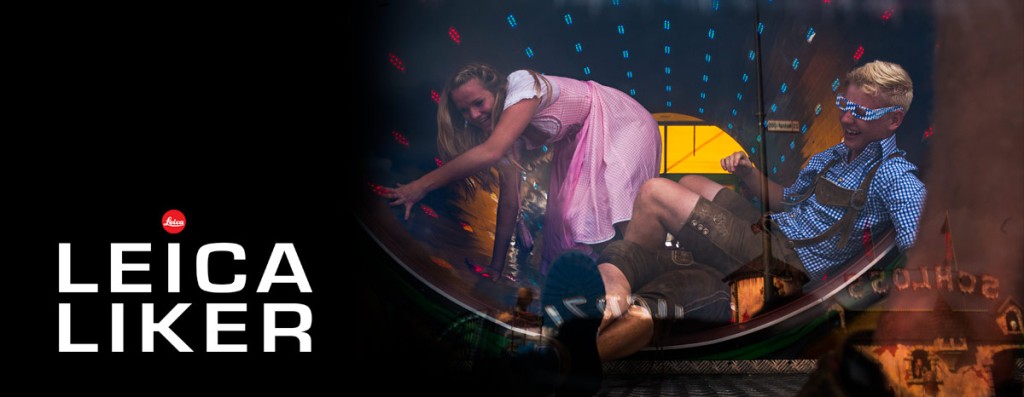


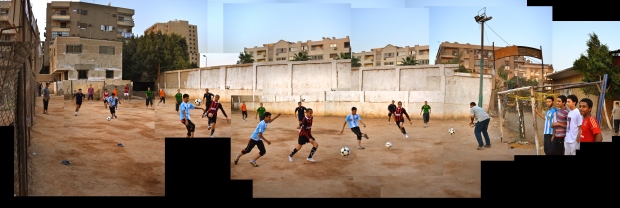
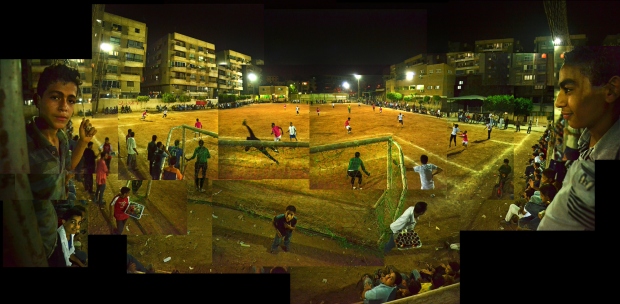
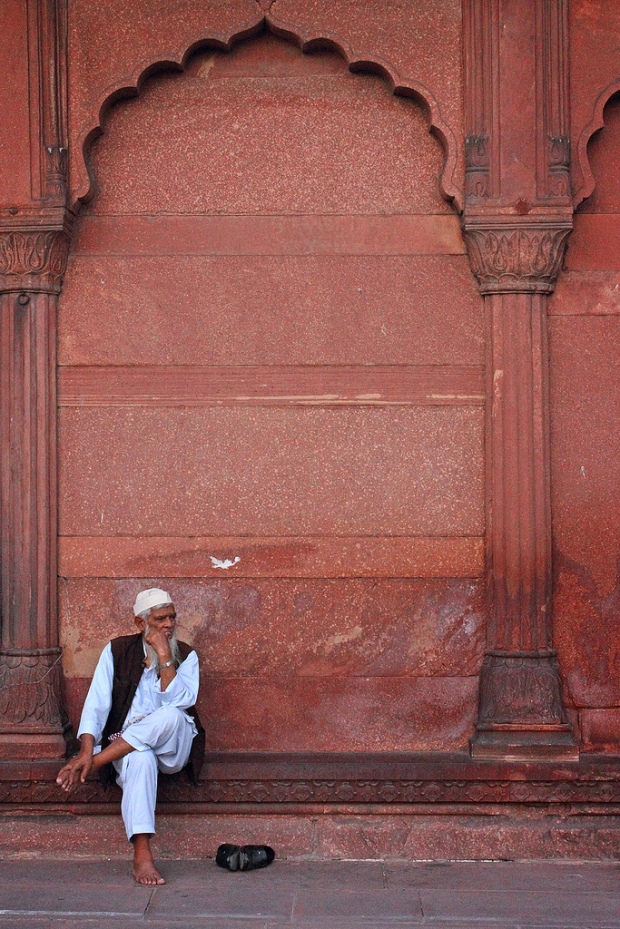
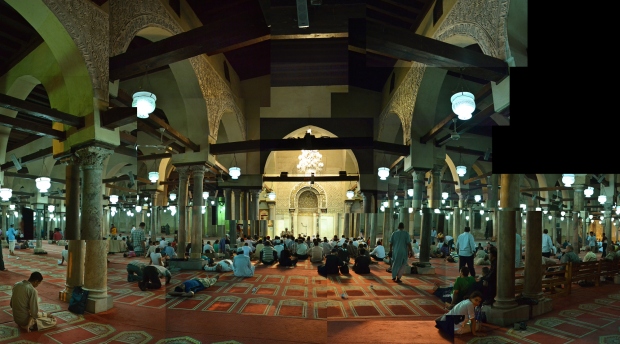

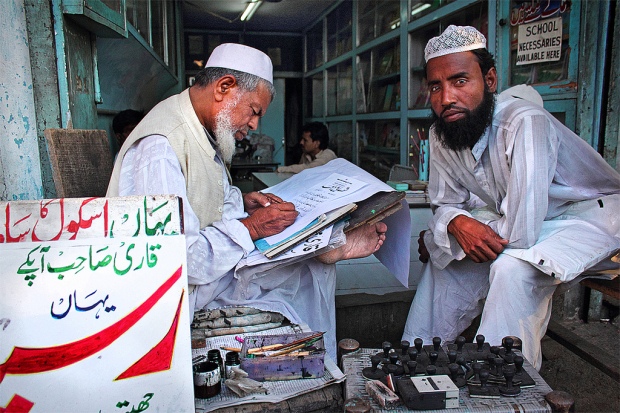





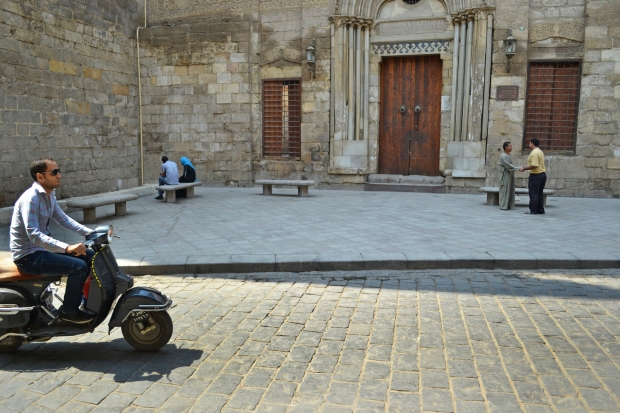
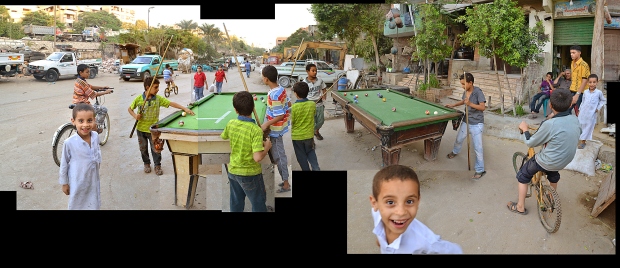






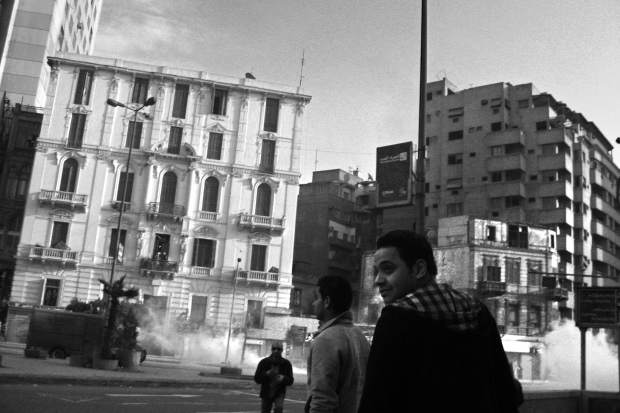


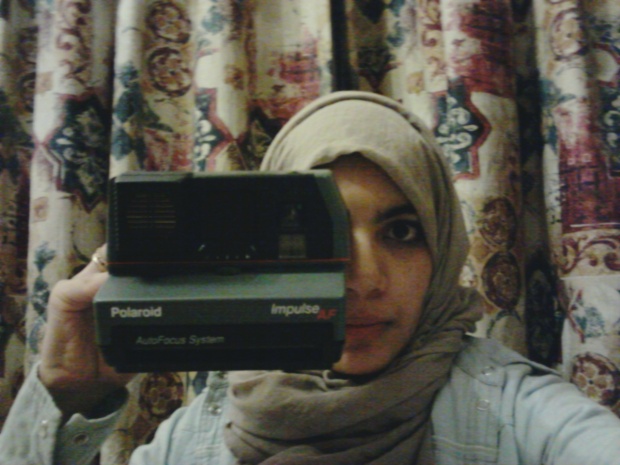
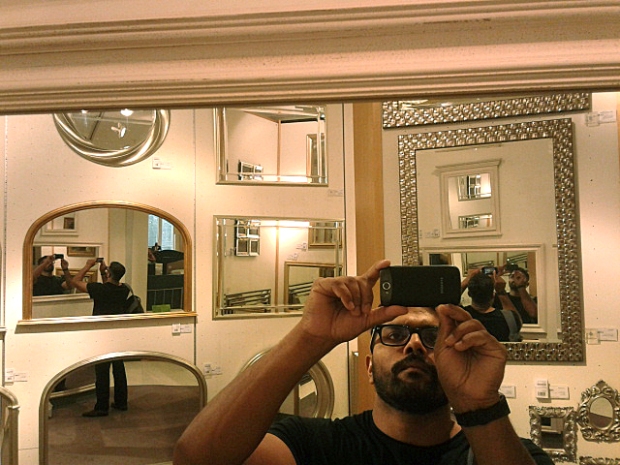








Great interview, love the photo collages.
Thanks for this interview Elizabeth – and thanks for sharing your work Nabeela & Omair. Very inspiring.
How strikingly beautiful are these shots, coming upon them late at night,